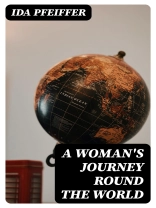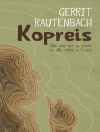In ‘A Woman’s Journey Round the World, ‘ Ida Pfeiffer chronicles her groundbreaking travels that defy the expectations of 19th-century women. This travelogue combines vivid descriptions, keen observations, and an adventurous spirit as Pfeiffer traverses continents, from the crowded streets of Europe to the exotic landscapes of South America and Asia. Her prose is both engaging and instructional, offering insight into cultures often misunderstood in her time. The literary context of this work highlights a burgeoning era of exploration, reflecting both romanticized views of travel and the burgeoning rights of women to engage in such pursuits at a time when their roles were largely confined to the domestic sphere. Ida Pfeiffer (1797-1858) emerged as a pioneering figure in travel literature, demonstrating undaunted courage and independence in a male-dominated world. Utilizing her own experiences as a widow and a mother, Pfeiffer sought to explore the world not merely as a tourist, but as an intrepid researcher and observer. Her narratives are enriched by the cultural and sociopolitical factors of her time, revealing her deep fascination with diverse peoples and places. This captivating account invites readers to immerse themselves in the spirit of adventure and to ponder the themes of gender, society, and exploration. ‘A Woman’s Journey Round the World’ not only serves as a testament to one woman’s resilience but also as an essential piece of literature that appeals to historians, feminists, and travelers alike.
About the author
Ida Pfeiffer (1797-1858) was an Austrian traveler and travel book author, who became renowned for her solo journeys at a time when such endeavors were unusual, particularly for women. Her most celebrated work, ‘A Woman’s Journey Round the World’ (1850), is an enlightening account of her arduous globe-trotting adventures, during which she overcame considerable challenges with fortitude and an insatiable thirst for discovery. Pfeiffer’s narrative style is characterized by a meticulous attention to detail and a straightforward recounting of the cultures, landscapes, flora, and fauna she encountered. What set her apart was her willingness to integrate herself into the daily lives of local people, transcending mere observation to gain a deeper understanding of the societies she visited. Although her works were initially met with skepticism, Pfeiffer’s writings eventually earned her recognition among geographers and the scientific community of her time for the rich ethnological and geographical information they contained. Her remarkable solo travels laid the groundwork for future generations of female explorers and expanded the horizons of travel literature. Her journeys took her across continents, leading to several other notable publications, including ‘Reise nach dem skandinavischen Norden und der Insel Island im Jahre 1845’ (Journey to the Scandinavian North and the Island of Iceland in the Year 1845) and ‘Meine Zweite Weltreise’ (My Second Journey Around the World). Pfeiffer’s legacy endures as an inspiring testament to the power of curiosity and the human spirit’s capacity for resilience and endurance.












